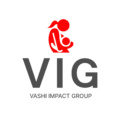Sexual exploitation, abuse, and sexual harassment (SEAH) and gender-based violence (GBV) are critical issues within the development and humanitarian sector, though they differ in scope and definition. While these terms are sometimes used interchangeably, practitioners and organisations must grasp their theoretical and practical distinctions to enhance prevention and response efforts.
SEAH encompasses sexual exploitation, abuse, and harassment within development and humanitarian organisations and Peacekeeping Missions. It primarily occurs within work-related environments and is rooted in power dynamics and inequalities. GBV, on the other hand, refers to any harmful act perpetrated against an individual’s will, often based on socially ascribed differences between men and women. Structural and systemic gender inequality contributes significantly to GBV prevalence.
Understanding the causes and perpetrators of SEAH and GBV is crucial. SEAH is often driven by power imbalances within organisations, while GBV is entrenched in gender inequality. Men predominantly perpetrate both, though women can also be perpetrators. Victims of SEAH and GBV include individuals interacting with humanitarian organisations, with women and girls facing the highest risks due to intersecting inequalities.
Efforts to address SEAH and GBV necessitate comprehensive organisational strategies. Preventive measures include developing relevant policies, conducting staff training, and fostering cultures that challenge gender and other inequalities. Similarly, GBV prevention and response efforts focus on programmatic initiatives and advocacy led by specialists, with particular emphasis on protecting women and girls.
In conclusion, addressing SEAH and GBV in development and humanitarian contexts requires a multifaceted approach that acknowledges power dynamics, gender inequalities, and the interplay of various forms of discrimination. By understanding these dynamics and implementing targeted interventions, organizations can work towards creating safer environments and promoting gender equality within their operations.
